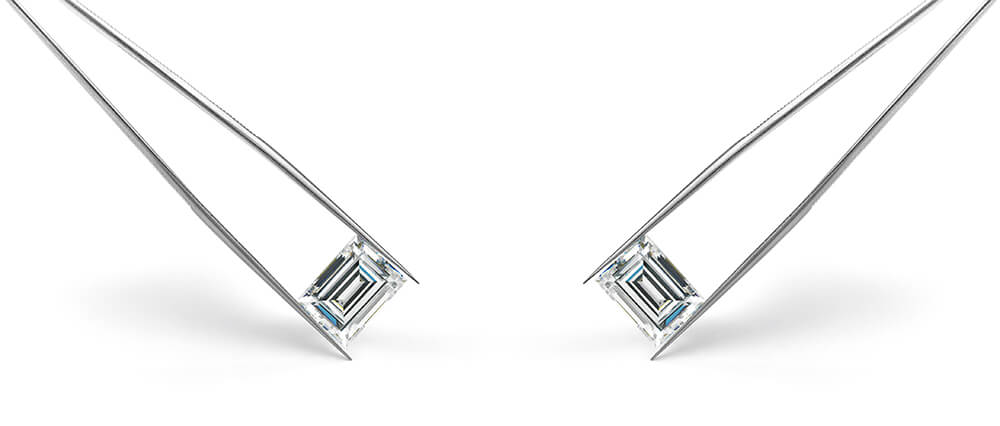Diamond Education
The Facts
Natural Vs Lab Grown Diamonds

How They're Made
Natural diamonds are formed deep within the earth’s mantle under intense heat and pressure. On the other hand, lab-grown diamonds are created in a lab using two primary methods: High-Pressure High Temperature (HPHT) and Chemical Vapor Deposition (CVD).
Quality and Clarity
Natural diamonds are graded based on their 4Cs: carat weight, color, cut, and clarity. The Gemological Institute of America (GIA) grades natural diamonds on a scale from D (colorless) to Z (light yellow or brown), with higher grades being more valuable. Natural diamonds can also contain inclusions and blemishes, affecting their clarity and overall value.
Lab-grown diamonds can be made in various colors, including pink, yellow, and blue, and are typically less expensive than natural diamonds. They are also naturally more environmentally friendly than mined diamonds, which do not require destructive mining practices. Lab Grown diamonds can also come with certification.
Rarity and Value
Natural diamonds are rare and valuable because they are formed deep within the earth and require significant resources to mine and process. The rarity and pricing of a diamond are controlled by DeBeers, The De Beers Diamond Consortium is an international corporation that specializes in diamond mining, a fundamental economic problem; supply and demand affect the price. Economists refer to the scarcity of a natural diamond.
Lab-grown diamonds, on the other hand, are more readily available and less expensive than natural diamonds. However, the value of a lab-grown diamond is still dependent on its quality and rarity, just like natural diamonds.
Ethical Concerns
One of the most significant advantages of lab-grown diamonds is that they do not involve the ethical concerns associated with traditional diamond mining. Mining natural diamonds can involve harmful practices, including child labor, forced labor, and environmental degradation. On the other hand, lab-grown diamonds are made in a controlled environment, ensuring they are free from any ethical concerns.
Natural and lab-grown diamonds have advantages and disadvantages, and the choice between them ultimately comes down to personal preference.
Personal Opinion
Jan Marten, G.g.

I was stubborn for a long time and did not want to offer Lab Grown diamonds. After much research, I have been offering lab-grown diamonds to customers with confidence and enthusiasm. If you are educated about your purchase, it can be an excellent solution for many people. For example, if your fiancé wants a large diamond and a high-quality stone, the lab-grown can give you a perfect option for about one-third of the price.
Initially, my biggest hang-up was the value. The cost of a Lab Grown diamond is not inexpensive, and you are paying for the beauty and the technology that has gone into the product. The stones are stunning, and as a Graduate Gemologist, it would be tough to tell the difference between a natural and lab-grown diamond with an untrained eye.
As with most things, you must research and have confidence in your jeweler. The prices are not regulated for lab-grown diamonds, and the prices are also falling yearly. It would be best to be confident with the diamond and the price. At this time, it is unknown whether the lab-grown diamonds will be of any value in 5 years. A natural diamond should hold its value. However, you may take a loss if you initially overpaid for the natural diamond.
There are so many variables. I am happy to chat with anyone that has a question about purchasing a lab-grown diamond. This is a big decision, so please be sure to learn and reach out with questions; it never costs to ask a question!